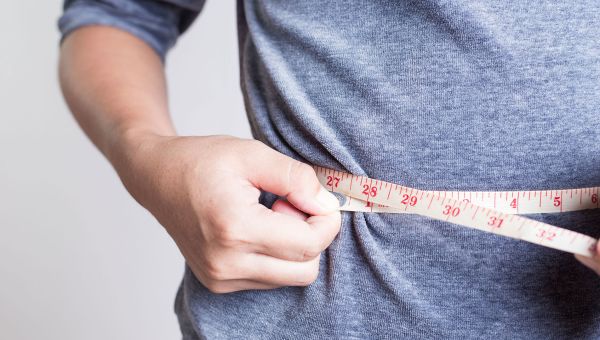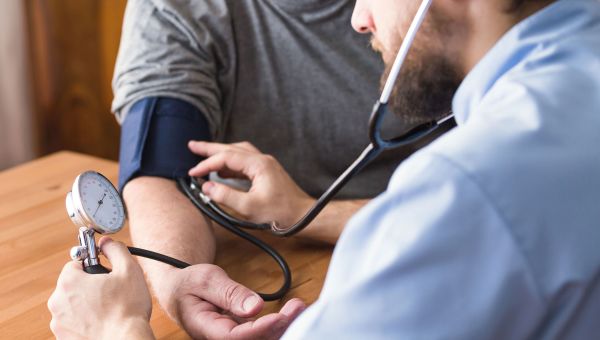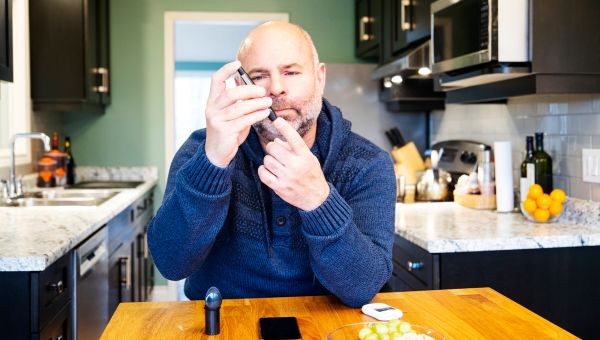Everything you need to know about type 2 diabetes
Diabetes numbers are on the rise in the U.S. But smart prevention strategies can help keep the epidemic at bay.
Updated on May 13, 2022

More than 37 million Americans have either type 1 or type 2 diabetes as of 2020, according to the Centers for Disease Control and Prevention (CDC). That’s more than six times the number of people who had diabetes in 1980. Additionally, almost one in four U.S. adults who is living with diabetes does not know that they have it
Diabetes is a serious condition that can… Show More
More than 37 million Americans have either type 1 or type 2 diabetes as of 2020, according to the Centers for Disease Control and Prevention (CDC). That’s more than six times the number of people who had diabetes in 1980. Additionally, almost one in four U.S. adults who is living with diabetes does not know that they have it
Diabetes is a serious condition that can potentially lead to heart trouble, kidney damage, blindness, loss of extremities or limbs, and other disabling conditions. But with exercise, a healthy diet, weight management, and the right medication, you can control diabetes and even prevent type 2 diabetes from occurring in the first place.
What's more, there's a growing consensus that weight loss could put type 2 diabetes into remission. This means you could go off medication and keep your blood sugar in the normal range with lifestyle changes alone.
In 2021, a review of studies about weight loss and diabetes remission was published in the British Medical Journal. It found that a weight loss of over 33 pounds, on average, is likely necessary to reach remission of type 2 diabetes. Remission through weight loss is more likely if you’ve been diagnosed within the last few years. And for type 2 diabetes to stay in remission, it’s important to keep the weight off.
Here’s what you need to know about diabetes, from diagnosis to treatment.
Show Less
Type 1 versus Type 2
Our bodies use glucose, a form of sugar, for energy. It’s absorbed into the bloodstream as the digestive system breaks down the food we eat. The pancreas makes a hormone called insulin, which allows the sugar to go from the bloodstream into the cells of your body, such as those in your muscles and… Show More
Our bodies use glucose, a form of sugar, for energy. It’s absorbed into the bloodstream as the digestive system breaks down the food we eat. The pancreas makes a hormone called insulin, which allows the sugar to go from the bloodstream into the cells of your body, such as those in your muscles and brain. People develop diabetes when they don’t have enough insulin or when their cells become resistant to insulin.
In those with type 1 diabetes, the immune system destroys the insulin-producing cells in the pancreas, so those cells either produce an insufficient amount of insulin or they don’t produce any insulin at all. About 5 to 10 percent of people with diabetes have type 1.
Type 2 diabetes develops when your cells become resistant to insulin. For some people with type 2 diabetes, their pancreas will not produce enough insulin or, in the later stages of the disease, no insulin at all. Because it’s harder for glucose to get into your cells, sugar builds up in your blood. Over time, high blood sugar can cause long-term health problems.
About 90 to 95 percent of people with diabetes have type 2, which most often develops during middle age, but it can also develop in younger people who have specific risk factors for diabetes, such as family history or obesity.
Show Less
Type 2 diabetes progression
Type 2 diabetes starts with insulin resistance, when your body can’t use insulin as efficiently as it once could to bring glucose into your cells. Glucose starts to build up in the bloodstream and the pancreas tries to keep up by making more insulin.
As long as the pancreas can meet the demand for… Show More
Type 2 diabetes starts with insulin resistance, when your body can’t use insulin as efficiently as it once could to bring glucose into your cells. Glucose starts to build up in the bloodstream and the pancreas tries to keep up by making more insulin.
As long as the pancreas can meet the demand for more insulin, you’ll have normal blood sugar levels. If it can’t keep up, glucose builds in the bloodstream, which is a condition called hyperglycemia. For people who have insulin resistance, even if the pancreas produces enough insulin, the body will not be able to use the insulin efficiently enough.
When your blood sugar is higher than normal but not high enough to qualify as diabetes, it’s called prediabetes. The CDC estimates that about 96 million Americans—over 1 in 3 people—has prediabetes. More than 80 percent of these people do not know that they have prediabetes. When prediabetes goes unchecked, it can eventually become type 2 diabetes.
Show Less
Risk factors
Risk factors for type 2 diabetes include:
- Being 45 years of age or older
- Being of African American, Native American, Alaska Native, Asian American, Latino/Hispanic, or Pacific Island descent
- Being overweight, as indicated by a body mass index (BMI) of 25 or greater—unless you’re Asian … Show More
Risk factors for type 2 diabetes include:
- Being 45 years of age or older
- Being of African American, Native American, Alaska Native, Asian American, Latino/Hispanic, or Pacific Island descent
- Being overweight, as indicated by a body mass index (BMI) of 25 or greater—unless you’re Asian American (in which case the BMI cutoff is 23 or greater) or Pacific Islander (BMI of 27 or greater)
- A family history of diabetes
- Low physical activity
Having gestational diabetes—the development of diabetes during pregnancy—increases the risk for type 2 diabetes after pregnancy.
Show Less
Symptoms
Diabetes goes undiagnosed in nearly one-quarter of people who have it because symptoms can be subtle and easy to miss. Common signs and symptoms include:
- Frequent urination
- Abnormal hunger or thirst
- Extreme fatigue
- Slow-to-heal cuts and bruises
- Blurry vision
- Tingling, pain, or numbness … Show More
Diabetes goes undiagnosed in nearly one-quarter of people who have it because symptoms can be subtle and easy to miss. Common signs and symptoms include:
- Frequent urination
- Abnormal hunger or thirst
- Extreme fatigue
- Slow-to-heal cuts and bruises
- Blurry vision
- Tingling, pain, or numbness in the hands or feet
- Losing weight without trying to do so

Diagnosis and testing
Diabetes is diagnosed with a blood test. The most commonly used tests are the A1C test, the fasting blood sugar test, the glucose tolerance test, and the random blood sugar test.
Once you’ve been diagnosed with diabetes, your healthcare provider (HCP) may ask you to monitor your blood sugar at home… Show More
Diabetes is diagnosed with a blood test. The most commonly used tests are the A1C test, the fasting blood sugar test, the glucose tolerance test, and the random blood sugar test.
Once you’ve been diagnosed with diabetes, your healthcare provider (HCP) may ask you to monitor your blood sugar at home with a handheld meter. Typical targets are a pre-meal blood sugar level between 80 and 130 milligrams per deciliter (mg/dl) or post-meal blood sugar of less than 180 mg/dl.
If you have diabetes, the typical target for an A1C test is below 7 percent. The A1C test gives an estimate of your average blood sugar level over the past three months. You’ll likely receive the A1C test at least twice a year during HCP visits.
Show Less
Complications
Heart disease is a common complication among people with diabetes. The CDC has estimated that 69 percent of adults with diabetes also have high blood pressure and 44 percent have high LDL (aka “bad” cholesterol). People with diabetes die from cardiovascular problems more often than… Show More
Heart disease is a common complication among people with diabetes. The CDC has estimated that 69 percent of adults with diabetes also have high blood pressure and 44 percent have high LDL (aka “bad” cholesterol). People with diabetes die from cardiovascular problems more often than people without diabetes and they’re hospitalized for heart attack and stroke more often, too.
Chronically high blood sugar levels can damage blood vessels over time. When small blood vessels are damaged, particularly in the eyes and kidneys, blindness and kidney failure may result. Damage to small blood vessels can also cause nerve damage, loss of sensation, and severe wounds in the feet. In extreme cases, amputation may be necessary. Diabetes is, in fact, the leading cause of blindness and below-the-knee amputations. Keeping blood sugar levels within their target range can help prevent these and other diabetes complications.
Show Less
Medication
Type 2 diabetes was once thought to be irreversible, though recent studies have shown that weight loss may help some people with type 2 diabetes go into remission.
The condition can be managed with lifestyle changes and medication when needed. Sometimes, blood sugar levels can be controlled… Show More
Type 2 diabetes was once thought to be irreversible, though recent studies have shown that weight loss may help some people with type 2 diabetes go into remission.
The condition can be managed with lifestyle changes and medication when needed. Sometimes, blood sugar levels can be controlled with diet and exercise alone. When medication becomes necessary, the first drug usually prescribed for type 2 diabetes is metformin, which improves the body’s ability to use insulin, decreases sugar production by the liver, and decreases absorption of sugar by the intestines.
If blood sugar levels are still high after a few months, other treatments may be added to your care plan, such as insulin injections or oral drugs like sulfonylureas (which increase your body’s insulin production) or thiazolidinediones (which increase insulin sensitivity). Another type of oral drug called SGLT2 inhibitors may help protect your heart from the effects of cardiovascular disease by increasing the amount of glucose excreted in urine.
Show Less
Prevention and management tips
Keeping weight down is one of the most important ways to manage diabetes. Exercise not only helps maintain a healthy weight, but it can help control your blood glucose, too. When you’re active, your cells can use insulin more effectively. Your muscles also pull glucose out of the blood to use for… Show More
Keeping weight down is one of the most important ways to manage diabetes. Exercise not only helps maintain a healthy weight, but it can help control your blood glucose, too. When you’re active, your cells can use insulin more effectively. Your muscles also pull glucose out of the blood to use for energy during physical activity.
The CDC recommends that adults should get at least 150 minutes per week of moderate-intensity exercise, like brisk walking, with at least two days of muscle-strengthening activities, like lifting weights.
Eating a healthy diet high in fiber, tracking carbohydrates, and consuming sugar and alcohol in moderation can also help control blood sugar levels.
Show Less
Centers for Disease Control and Prevention. National Diabetes Statistics Report. Last reviewed January 18, 2022.
Prevalence and Incidence of Diabetes Mellitus-- United States, 1980-1987. MMWR. November 16, 1990. 39(45);809-812.
Taylor R, Ramachandran A, Yancy WS, et al. Nutritional basis of type 2 diabetes remission. BMJ. 2021;374:n1752. Published 2021 Jul 9.
Centers for Disease Control and Prevention. What is Diabetes? Last reviewed December 16, 2021.
Centers for Disease Control and Prevention. Risk Factors for Diabetes-Related Complications. Last reviewed December 29, 2021.
Centers for Disease Control and Prevention. Diabetes and Asian American People. Page last reviewed: April 25, 2022.
Sun D, Zhou T, Heianza Y, et al. Type 2 diabetes and hypertension. Circ Res. 2019;124(6):930-937.
Centers for Disease Control and Prevention. Risk Factors for Diabetes-Related Complications. Page last reviewed: December 29, 2021.
Centers for Disease Control and Prevention. Physical activity. Adults. Last reviewed March 17, 2022.
Aronson D, Edelman ER. Coronary artery disease and diabetes mellitus. Cardiol Clin. 2014;32(3):439-455.
Herman WH, Teutsch SM, Sepe SJ, Sinnock P, Klein R. An approach to the prevention of blindness in diabetes. Diabetes Care. 1983;6(6):608-613.
Walicka M, Raczyńska M, Marcinkowska K, et al. Amputations of Lower Limb in Subjects with Diabetes Mellitus: Reasons and 30-Day Mortality. J Diabetes Res. 2021;2021:8866126. Published 2021 Jul 24.
More On


video

slideshow


video


video
